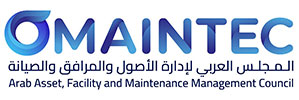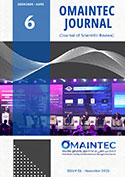Adolfo Crespo Márquez*, Zensuke Matsuda**
*University of Seville. Department of Industrial management. Spain. Chairman of Project 25DX of the Global Forum on Engineering and Asset Management.
**Japan Institute of Plant Maintenance, Japan. Leader of Project 25DX of the Global Forum on Engineering and Asset Management.
Abstract #
The Global Forum on Maintenance and Asset Management (GFMAM) collaboratively shares knowledge and standards in maintenance and asset management. The digital transformation (DX) landscape in this field is rapidly evolving, presenting various challenges and opportunities. This paper provides an overview of key findings, implications, concerns, and guidelines to facilitate the transformative process.
This analysis reveals significant implications for asset management and maintenance, highlighting the vital role of data, analytics, compliance, optimization, human resources, and holistic lifecycle management in navigating challenges and leveraging opportunities brought by digital transformation. Organizations must embrace these changes, foster innovation, and adapt their strategies and processes to fully capitalize on digital transformation’s benefits. To understand community concerns, a thorough survey was conducted among industry professionals from diverse sectors and roles. The survey aimed to identify current challenges, barriers, and readiness for digital transformation, enabling us to offer tailored guidance and recommendations for professionals and organizations at different levels of asset management maturity. In this paper we briefly review implications of digital transformations, we present some results of the survey to show some specific concerns of the respondents, and we introduce a list of guidelines elaborated, per role in the organization, to navigate this digital transformation. The This is and advance of the GFMAM document on DX in maintenance and asset management, that is expected to be published by the end of 2023.
Keywords: Maintenance, asset management, digital transformation, Guidelines
1. Introduction #
Digital Transformation (DX) is defined by the United Nations [1] as the integration of digital technology into all organizational areas, fundamentally changing how the organization operates and delivers value to customers or stakeholders. It is also about prioritizing organizational culture change, which requires organizations to continually challenge the status quo, experiment and get comfortable with failure.
Digital transformation is a widely used term that, in practice, will look very different in each organization. In essence, it refers to the customer-driven strategic business transformation requiring organizational change and the implementation of digital technologies to reach digital capabilities [2]. In maintenance and asset management has seen rapid advancements in data analytics, artificial intelligence, and Fourth Industrial Revolution technologies. These tools offer insights into complex systems, revolutionizing asset management practices. Some important findings are:
- Advanced analytics make condition-based maintenance (CBM) attractive for increased efficiency. Transitioning to predictive maintenance may require further investments, but it yields significant gains by monitoring influential factors alongside component conditions.
- Data plays a pivotal role, requiring collaboration between experts and data scientists to develop robust models. Regulatory compliance and effective change management are critical considerations for evolving maintenance strategies.
- Digital transformation optimizes maintenance dynamically and automates tasks, reshaping roles in maintenance and asset management. Human expertise remains vital for decision-making in the data-driven landscape.
- Digitalization allows for servitization [3] of products and complete lifecycle management. Manufacturers will prioritize asset lifecycle aspects more attentively, leading to more sustainable practices.
By embracing data-driven approaches and human expertise, organizations can achieve efficiency, cost-effectiveness, and sustainability in maintenance practices.
2. Implications of Digital Transformation in Maintenance and Asset Management #
2.1 Policy Implications
The policy implications of digital transformation offer a comprehensive approach to incorporating data and digital technologies in asset and infrastructure management. This policy approach seeks to promote an integrated view of data’s economic characteristics, facilitating cost management, risk mitigation, and performance optimization.
State governments are proactively investing in and developing digital capabilities, platforms, and use cases, while local governments are actively formulating strategies to embrace digital transformation. The policy implications underscore the importance of coordinated efforts across different government levels. By aligning policies and fostering collaboration among stakeholders, governments can effectively navigate digital challenges and leverage digital tools to improve cost management, risk reduction, and operational performance.
2.2 Business Implications
Digital transformation is reshaping the landscape of business operations, customer engagement, and value creation, becoming a crucial aspect for organizations to thrive in the digital era. This transformational process streamlines operations through automation, artificial intelligence (AI), and robotics, resulting in enhanced efficiency and cost reduction. Organizations now have the capability to engage with customers in real-time, personalize experiences, and provide tailored solutions through digital channels and social media platforms. This level of interaction allows for deeper connections and improved customer satisfaction.
As a result of digital transformation, new revenue streams and business models emerge, enabling organizations to capitalize on data assets and participate in platform ecosystems. In order to remain competitive and drive growth, adapting to digital transformation becomes imperative. This process demands a holistic approach, incorporating cultural, process, and skill changes. Leaders must foster innovation and a learning culture, empowering the organization to seize digital opportunities and deliver superior customer experiences.
2.3 management Implications
The advent of digital transformation has profoundly impacted asset management, prompting organizations to reassess their approaches throughout the different stages of the asset lifecycle. To comprehensively address these implications, a strategic division of asset management into distinct lifecycle stages is advantageous. This enables organizations to examine the key aspects within each stage, gaining a deeper understanding of how digital transformation influences asset management. By studying the implications at each lifecycle stage, organizations can harness digital technologies effectively to optimize asset performance, enhance maintenance practices, improve decision-making, and achieve greater operational efficiency. This detailed exploration spans from asset acquisition and commissioning to operation, maintenance, and disposal.
As the digital landscape rapidly evolves, this approach empowers organizations to proactively adapt and thrive, ensuring they remain at the forefront of the digital revolution. By embracing the opportunities presented by digital transformation, organizations can elevate their asset management practices to new heights, driving success across the entire lifecycle.
2.4 Technical Implications
As organizations embrace digital technologies and undergo transformative changes, it becomes essential to explore how these advancements reshape maintenance practices, processes, and technologies. For instance, in terms of maintenance activities, they can be broadly classified into two categories: preventive and corrective maintenance. Preventive maintenance involves proactive actions to prevent equipment failures and mitigate potential issues, while corrective maintenance addresses equipment failures, malfunctions, or identified problems.
To comprehensively examine the implications of digital transformation in maintenance, Table 3 is utilized for categorization. It provides concise descriptions of maintenance activities, facilitating a direct comparison between pre- and post-digital transformation scenarios This allows to better understand the impact of digital transformation on different maintenance activities.
While embracing digital technologies in maintenance offers numerous advantages, it also comes with its share of challenges. These challenges encompass technical complexities, integration hurdles, data security concerns, and the demand for skilled personnel. Moreover, the initial investment costs and the need for infrastructure upgrades can pose obstacles for organizations contemplating digital transformation in their maintenance practices. To unlock the full potential of digital technologies in maintenance operations, it is imperative for companies to address these challenges effectively and devise strategies to overcome them.
|
Maintenance Type |
Activities description |
Before digital transformation |
After digital transformation |
|---|---|---|---|
|
Preventive maintenance |
Maintenance tasks performed on a regular basis to prevent equipment failures |
Manual inspections and services using checklists and maintenance schedules |
Automated inspections and services using digital monitoring systems. Maintenance schedules created using EAM systems. PM optimized using APM systems. Major interventions optimized using AIP systems. |
|
Condition-based maintenance |
Preventive maintenance tasks performed based on the actual condition of the equipment (includes condition assessment) |
Manual inspections and subjective assessments to determine when maintenance is needed |
Digital sensors and monitoring systems to continuously monitor equipment and trigger data-driven condition-based maintenance in real-time. |
|
Predictive maintenance |
CBM tasks performed based on predicted equipment failures (includes activities enabling prediction) |
Expert inspections and analysis to identify potential failures |
Digital sensors, data analytics, and machine learning algorithms to classify & predict (RUL) equipment failures and schedule maintenance before failures occur. |
|
Corrective maintenance |
Maintenance tasks performed after equipment failure |
Reactive maintenance including failure diagnosis and repair. |
Reactive maintenance performed after equipment failure, but with the use of digital tools such as remote monitoring and diagnostic systems to quickly identify the root cause of the problem |
Table 1. Implications of digital transformation in different type of maintenance activities
2.5. Human Implications
The digital transformation journey in maintenance and asset management goes beyond technical aspects; it profoundly affects the people involved in these fields. As organizations adopt digital technologies, it becomes crucial to acknowledge and address the human implications of this transformation. The workforce engaged in maintenance and asset management experiences a paradigm shift in their roles, responsibilities, and required skill sets. We must focus on areas such as the new workforce environment, the emergence of new roles and responsibilities, job satisfaction, and the necessity for collaboration and effective change management. By understanding and responding to these human-centric aspects, organizations can ensure a successful and smooth integration of digital technologies in their maintenance and asset management practices, maximizing the benefits for both the workforce and the overall organization.
3. Concerns #
3.1. The Survey
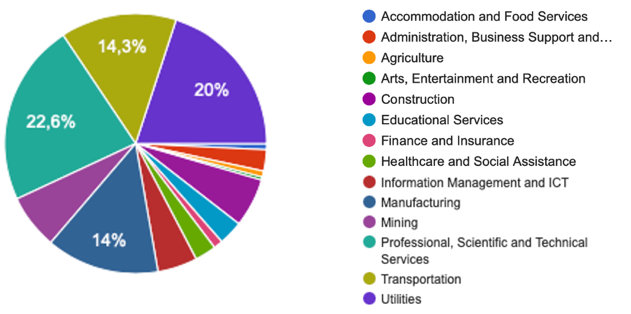 The focus of project 25 DX is formulating practical guidelines to navigate digital transformation. To ensure the relevance and effectiveness of these guidelines, we have conducted a survey and some examples of the results are presented in this section. The survey, designed to capture insights from the maintenance and asset management community, seeks to shed light on their concerns and challenges in the context of digital transformation. To facilitate this, Google Forms® was employed as the survey software. By exchanging experiences and viewpoints of more than 500 respondents, we could shape the forthcoming guidelines outlined in the subsequent section of this paper.
The focus of project 25 DX is formulating practical guidelines to navigate digital transformation. To ensure the relevance and effectiveness of these guidelines, we have conducted a survey and some examples of the results are presented in this section. The survey, designed to capture insights from the maintenance and asset management community, seeks to shed light on their concerns and challenges in the context of digital transformation. To facilitate this, Google Forms® was employed as the survey software. By exchanging experiences and viewpoints of more than 500 respondents, we could shape the forthcoming guidelines outlined in the subsequent section of this paper.
Figure 1. Survey respondents by Sector of activity.
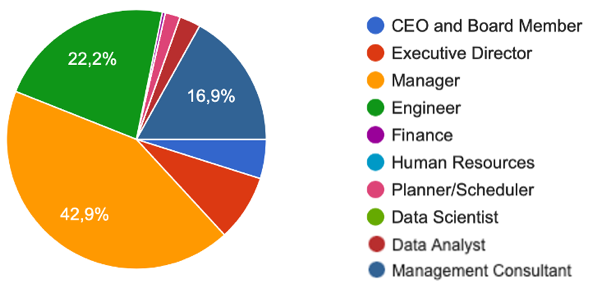
Figure 2. Survey respondents by role in the organization
By exchanging experiences and viewpoints of more than 500 respondents, we could shape the forthcoming guidelines outlined in the subsequent section of this paper. Through this collaborative effort, we contribute to enhancing their pertinence and applicability. The engagement of the community in this survey is highly valued by the Project 25 DX working group, as it enables the formulation of focused and tailored recommendations that directly address the unique needs and challenges faced by professionals in the field. Through this collective endeavor, we are poised to pave the way for a successful digital transformation in maintenance and asset management.
3.1. Survey Sample Results
The analysis of some digital transformation concerns is done in this paper is general, considering all respondents, but in the GFMAM document, is also done by industry sector and respondent role. So the GFMAM Project 25 DX document provides valuable insights into the specific challenges and barriers faced by different sectors and roles within an organization, allowing for targeted strategies and solutions. This information helps us understand the unique obstacles and priorities that exist within each sector and role, enabling us to tailor our guidelines and recommendations accordingly.
3.1.1. The existence of tools & metrics available to justify DX
The responses to the question regarding the availability of tools or techniques to justify and measure the value of Digital Transformation for organizations in the bottom line reveal a mixed landscape (see Figure 3).
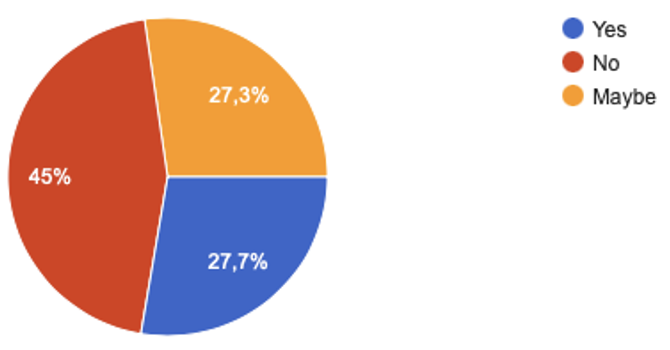
Figure 3. The answers concerning the existence of tools and metrics ti justify DX.
A significant percentage of respondents (45%) indicated that their organizations do not currently possess the necessary tools or techniques to justify and measure the value of digital transformation in terms of its impact on the bottom line. This suggests a potential gap in organizations’ ability to effectively quantify the return on investment and demonstrate the financial benefits derived from digital transformation initiatives. On the other hand, a smaller percentage of respondents (27.7%) stated that their organizations do have the tools or techniques in place to justify and measure the value of digital transformation. This indicates a positive readiness to assess the financial impact of digital transformation efforts and align them with the organization’s bottom-line goals. A similar proportion of respondents (27.3%) chose the “Maybe” option, reflecting uncertainty or a lack of clarity regarding the availability or effectiveness of tools and techniques for measuring the value of digital transformation. It is important to address this uncertainty and provide organizations with the necessary guidance and resources to develop robust measurement frameworks that align with their specific business objectives.
To ensure the success and sustainability of digital transformation initiatives, organizations should focus on developing or acquiring suitable tools and techniques that enable them to effectively evaluate the financial impact and value generation of their digital transformation efforts. This may involve adopting key performance indicators (KPIs), implementing data analytics capabilities, and leveraging relevant frameworks or methodologies for assessing the return on investment. By doing so, organizations can make informed decisions, optimize resource allocation, and communicate the tangible benefits of digital transformation in terms of the bottom line.
3.1.2 The problems expected to be solved by using DX
The responses to the question regarding the problems that organizations aim to solve using digital technologies provide valuable insights into their priorities (see Figure 4).

Figure 4. The problems that are expected to be solved thanks to DX
The highest percentage of respondents, 85.8%, identified the improvement of reliability or efficiency of processes as the problem they want to address through digital technologies. This aligns with the potential of digital solutions to optimize and streamline operations, automate manual tasks, and enhance overall process efficiency. By leveraging digital technologies such as IoT, AI, and data analytics, organizations can drive operational excellence, reduce downtime, and improve productivity. Cost reduction was selected by 44.2% of respondents, highlighting the financial aspect of digital transformation. Digital technologies offer opportunities to identify cost-saving measures, eliminate inefficiencies, and optimize resource utilization. By leveraging automation, predictive maintenance, and data-driven decision-making, organizations can achieve significant cost savings across various areas of their operations. Employee skill development, selected by 26.3% of respondents, signifies the importance of nurturing a skilled workforce in the era of digital transformation. Organizations recognize that equipping employees with the necessary digital skills and fostering a culture of continuous learning are crucial for successful digital transformation initiatives. Digital technologies can support employee training and development, enabling them to adapt to new technologies and take advantage of digital tools and platforms.
Other problem areas mentioned include safety of working conditions (28.1%), effective and competitive product development (25.9%), and environment and sustainability (32.1%). These responses highlight the broader impact of digital technologies beyond operational efficiency and cost reduction. Digital solutions can contribute to enhancing workplace safety with IoT sensors, real-time monitoring, and predictive analytics. They can also enable organizations to innovate and bring competitive products to market faster while considering sustainability and environmental factors.
4 Guidelines to Navigate DX in Maintenance and Asset Management.
In project 25 DX document we identify key guidelines that can be followed by specific roles within the organization to address the concerns discussed in the previous section. By understanding the responsibilities and challenges faced by these roles, we can provide actionable recommendations to guide them in navigating the digital transformation journey. The roles considered are the following:
- Managers and Business Leaders,
- Engineers and Technical Professionals,
- Area Responsible Professionals,
- Legal Professionals,
- Commercial Professionals,
- Procurement Professionals.
While in this article we present only the general guidelines per role, in Project 25 DX document these guidelines are customized by role and by maturity of the asset management organization. The guidelines will be relevant to the organization depending on its level of maturity in asset management. This approach allows for greater customization and adaptation of the guidelines to the specific needs of the organization at each maturity stage. By understanding the reasoning behind the choice of each guideline, stakeholders can make more informed and strategic decisions about which aspects to focus on based on their current maturity level.
Based on the survey findings, a total of 19 guidelines are proposed for specific roles within the organization, to navigate the digital transformation journey effectively. Each guideline is presented with suggested KPIs and with the rational for the focus to placed, per guideline, on specific organization maturity levels.
|
Role |
Guidelines to follow |
|---|---|
|
Managers and Business Leaders |
|
|
|
|
|
|
|
|
Engineers and Technical Professionals |
|
|
|
|
|
|
|
|
Area Responsible Professionals |
|
|
|
|
|
|
Legal Professionals |
|
|
|
|
|
|
Commercial Professionals |
|
|
|
|
|
|
Procurement Professionals |
|
|
Table 2. List of guidelines per role in the organization.
5 Conclusions #
The Global Forum on Maintenance and Asset Management (GFMAM) collaboratively shares knowledge and standards in maintenance and asset management. The Project 25 DX of the GFMAM is exploring how digital transformation (DX) landscape in this field is rapidly evolving, presenting various challenges and opportunities. This paper provides a brief overview of the project document content and results in terms of guidelines provided per role and per maturity of the organizations.
The survey findings shed light on the multifaceted nature of digital transformation in maintenance and asset management. By understanding the specific challenges, perspectives, and opportunities within sectors and roles, organizations can chart a strategic path forward.
The reader can appreciate how emphasizing data governance, information security, leadership, and culture will be key to sustained success in the digital era. By implementing the proposed guidelines, organizations can navigate the digital transformation journey effectively, drive innovation, and optimize their maintenance and asset management practices.
The GFMAM document is expected to be published at the end of 2023.
6 Acknowledgements #
We would like to acknowledge the work of the rest of the Project 25 DX members, in alphabetical order: Alex Afshar, Adolfo Crespo Del Castillo, Raymond Hickey, David Smallbone and Ali Zuashkani.
References #
- Standards & Digital Transformation. Good Governance in a Digital Age. 2021. UNIDO. United Nations Industrial Development organization. Vienna. https://www.unido.org/sites/default/files/files/2021-11/Standards%20and%20Digital%20Transformation_Complete_2021.pdf
- Uhl, A., & Gollenia, L.A. (2014). Digital Enterprise Transformation: A Business-Driven Approach to Leveraging Innovative IT (1st ed.). Routledge. https://doi.org/10.4324/9781315577166
- Vandermerwe, S. and Rada, J. (1988), “Servitization of business: adding value by adding services”, European Management Journal, Vol. 6 No. 4.

